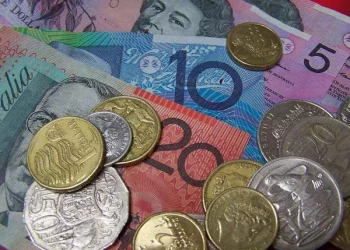In the intricate and dynamic realm of the foreign exchange market, the exchange rate between the British pound (GBP) and the euro (EUR) holds significant importance. This rate doesn’t merely reflect the relative value of two major European currencies; it serves as a barometer for the economic health and market sentiment of both the United Kingdom and the eurozone. Understanding the current pound – to – euro exchange rate, its historical context, influencing factors, and potential future trends is crucial for a wide range of stakeholders, including investors, businesses engaged in cross – border trade, and financial analysts.
Current Pound to Euro Exchange Rate
As of April 5, 2025, multiple reliable sources provided insights into the pound – to – euro exchange rate. According to sina.cn, 1 pound was equivalent to 1.1757 euros in real – time conversion. Meanwhile, finance.sina.com.cn reported that the rate was 1.1753, with a daily decline of 0.009470, a percentage decrease of 0.7825%. The day’s high was 1.1856, the low was 1.1729, with the previous closing rate at 1.1848 and the opening rate at 1.1848. This variance among sources could be due to differences in data collection times and the nature of exchange rate fluctuations in the highly volatile forex market.
Historical Overview of the Pound – Euro Exchange Rate
Over the past decade, the pound – euro exchange rate has experienced significant fluctuations. After the Brexit referendum in 2016, the pound faced substantial depreciation against the euro. The uncertainty surrounding the UK’s exit from the European Union led to a loss of confidence in the British economy, causing investors to shift their assets away from the pound. In the subsequent years, as the Brexit negotiations progressed, the exchange rate continued to be volatile. For instance, during periods when a smooth Brexit deal seemed more likely, the pound strengthened against the euro. Conversely, when negotiations hit roadblocks, the pound weakened.
Factors Influencing the Pound to Euro Exchange Rate
Economic Fundamentals
Economic indicators play a crucial role in determining the exchange rate between the pound and the euro. Gross Domestic Product (GDP) growth rates are a key factor. A higher GDP growth rate in the UK relative to the eurozone indicates a more robust economy, which attracts foreign investment. As a result, the demand for the pound increases, driving up its value against the euro. Similarly, inflation rates impact the exchange rate. High inflation in the UK erodes the purchasing power of the pound, making British goods more expensive compared to those from the eurozone. This leads to a decrease in demand for British exports and a subsequent weakening of the pound.
Monetary Policy
The monetary policies of the Bank of England (BoE) and the European Central Bank (ECB) have a direct impact on the pound – euro exchange rate. Interest rate decisions are particularly significant. When the BoE raises interest rates, it makes British assets more attractive to foreign investors seeking higher returns. This increases the demand for the pound, causing it to appreciate against the euro. On the other hand, if the ECB lowers interest rates, the euro may depreciate relative to the pound. Additionally, quantitative easing programs, through which central banks inject money into the economy, can also influence the exchange rate.
Political Developments
Political events in the UK and the eurozone can cause significant fluctuations in the pound – euro exchange rate. In the UK, general elections, changes in government policies, and issues related to devolution can impact the economy and, consequently, the exchange rate. In the eurozone, political instability, such as disputes among member states over fiscal policies or the handling of economic crises, can weaken the euro. The Brexit process is a prime example of how political developments can have a long – term and far – reaching impact on the pound – euro exchange rate.
Trade Relations
The trade relationship between the UK and the eurozone is a major determinant of the pound – euro exchange rate. The UK and the eurozone are significant trading partners. A trade surplus for the UK means that it exports more goods and services to the eurozone than it imports. This leads to an increased demand for the pound as eurozone businesses need to purchase pounds to pay for British exports, strengthening the pound against the euro. Conversely, a trade deficit weakens the pound.
Impact of the Pound – Euro Exchange Rate
On Businesses
For businesses engaged in cross – border trade between the UK and the eurozone, the pound – euro exchange rate has a direct impact on their profitability. A stronger pound makes British exports more expensive for eurozone consumers, potentially reducing demand for UK goods. At the same time, it makes imports from the eurozone cheaper for British businesses. Conversely, a weaker pound makes British exports more competitive in the eurozone market but increases the cost of imports.
On Investors
Investors holding assets denominated in pounds or euros are directly affected by fluctuations in the exchange rate. For example, a eurozone investor who holds British stocks or bonds will see the value of their investment change in euro terms as the pound – euro exchange rate fluctuates. Currency hedging strategies are often employed by investors to mitigate the risks associated with exchange rate volatility.
Forecasting the Pound – Euro Exchange Rate
Technical Analysis
Technical analysis involves studying historical price charts and using various technical indicators to predict future price movements. Traders and analysts use tools such as moving averages, relative strength index (RSI), and Fibonacci retracements to identify trends, support and resistance levels, and potential reversal points. For example, if the pound – euro exchange rate has been trending upwards and the RSI indicates overbought conditions, it may suggest a potential downward correction.
Fundamental Analysis
Fundamental analysis focuses on economic and political factors to forecast exchange rate movements. Analysts monitor economic data releases, central bank announcements, and political developments to assess the future direction of the pound – euro exchange rate. For instance, if economic data indicates that the UK economy is likely to grow at a faster pace than the eurozone economy in the coming months, it may suggest that the pound will strengthen against the euro.
Conclusion
The exchange rate between the pound and the euro is a complex and dynamic phenomenon influenced by a multitude of economic, political, and market – related factors. As of April 5, 2025, the rate was around 1.1753 – 1.1757 euros per pound. However, this rate is subject to constant change due to the ever – evolving nature of the global economy. Understanding the historical context, influencing factors, and potential future trends of the pound – euro exchange rate is essential for businesses, investors, and policymakers. By closely monitoring economic data, political developments, and market sentiment, stakeholders can make more informed decisions in the highly volatile foreign exchange market.
Related topics
























